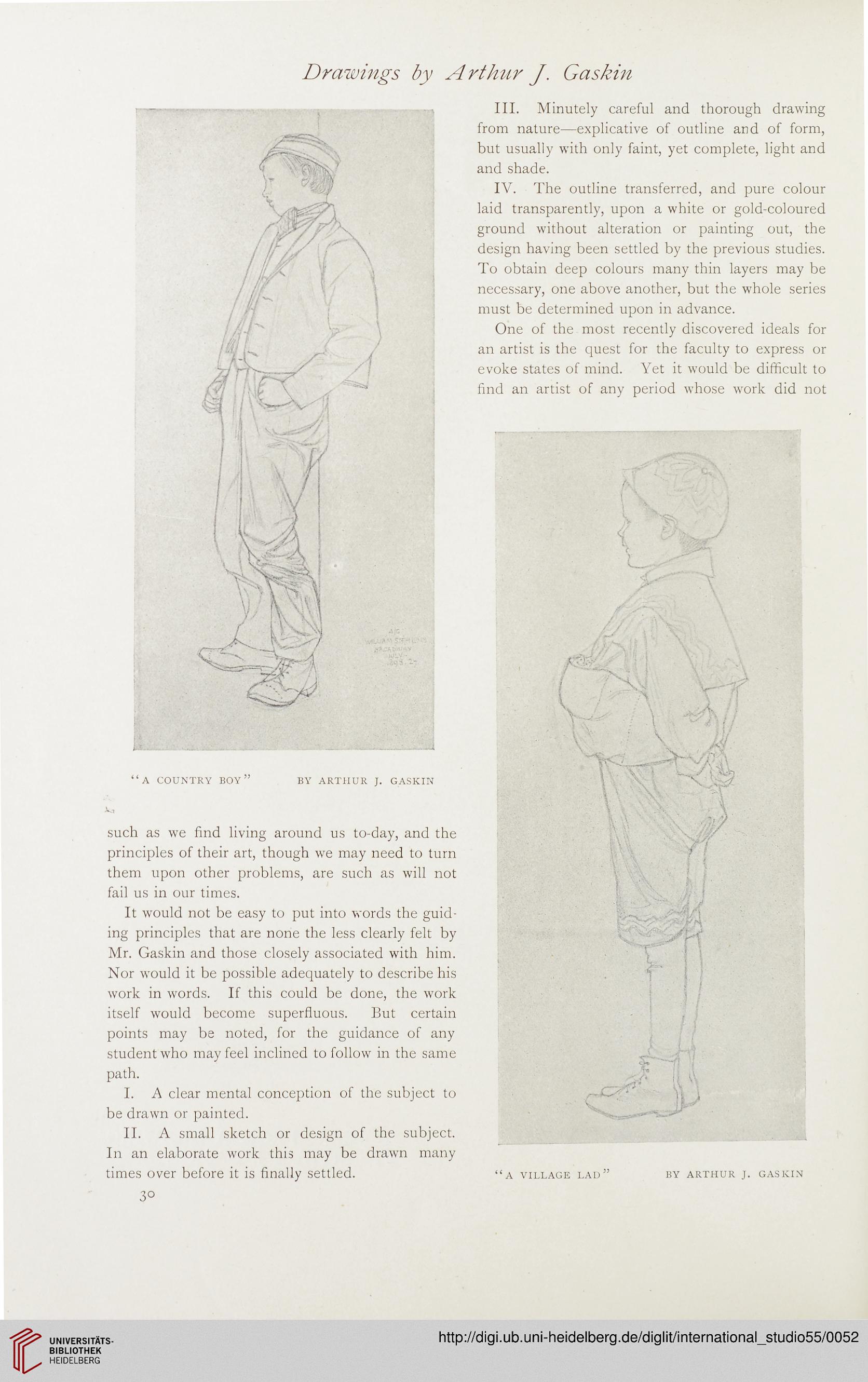Drawings by Arthur J. Gaskin
“A COUNTRY boy” BY ARTHUR J. GASKIN
Jk,
such as we find living around us to-day, and the
principles of their art, though we may need to turn
them upon other problems, are such as will not
fail us in our times.
It would not be easy to put into words the guid-
ing principles that are none the less clearly felt by
Mr. Gaskin and those closely associated with him.
Nor would it be possible adequately to describe his
work in words. If this could be done, the work
itself would become superfluous. But certain
points may be noted, for the guidance of any
student who may feel inclined to follow in the same
path.
I. A clear mental conception of the subject to
be drawn or painted.
II. A small sketch or design of the subject.
In an elaborate work this may be drawn many
times over before it is finally settled.
3°
III. Minutely careful and thorough drawing
from nature—explicative of outline and of form,
but usually with only faint, yet complete, light and
and shade.
IV. The outline transferred, and pure colour
laid transparently, upon a white or gold-coloured
ground without alteration or painting out, the
design having been settled by the previous studies.
To obtain deep colours many thin layers may be
necessary, one above another, but the whole series
must be determined upon in advance.
One of the most recently discovered ideals for
an artist is the quest for the faculty to express or
evoke states of mind. Yet it would be difficult to
find an artist of any period whose work did not
“a village lad
BY ARTHUR J. GASKIN
“A COUNTRY boy” BY ARTHUR J. GASKIN
Jk,
such as we find living around us to-day, and the
principles of their art, though we may need to turn
them upon other problems, are such as will not
fail us in our times.
It would not be easy to put into words the guid-
ing principles that are none the less clearly felt by
Mr. Gaskin and those closely associated with him.
Nor would it be possible adequately to describe his
work in words. If this could be done, the work
itself would become superfluous. But certain
points may be noted, for the guidance of any
student who may feel inclined to follow in the same
path.
I. A clear mental conception of the subject to
be drawn or painted.
II. A small sketch or design of the subject.
In an elaborate work this may be drawn many
times over before it is finally settled.
3°
III. Minutely careful and thorough drawing
from nature—explicative of outline and of form,
but usually with only faint, yet complete, light and
and shade.
IV. The outline transferred, and pure colour
laid transparently, upon a white or gold-coloured
ground without alteration or painting out, the
design having been settled by the previous studies.
To obtain deep colours many thin layers may be
necessary, one above another, but the whole series
must be determined upon in advance.
One of the most recently discovered ideals for
an artist is the quest for the faculty to express or
evoke states of mind. Yet it would be difficult to
find an artist of any period whose work did not
“a village lad
BY ARTHUR J. GASKIN




